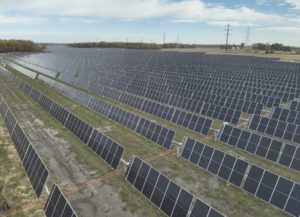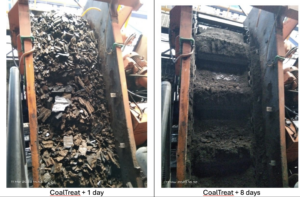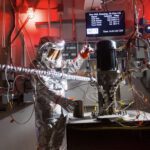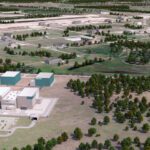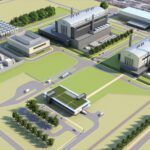Texas A&M University System has unveiled four nuclear developers with which it plans to explore building and operating small modular reactor plants (SMRs) at its Texas A&M-RELLIS campus near College Station. The project—dubbed “The Energy Proving Ground”—is part of a state-supported initiative to deploy operational advanced reactors in Texas within the next five to seven years.
The state public higher education system on Feb. 4 said it picked Terrestrial Energy, Kairos Power, Natura Resources, and Aalo Atomics after a formal process. The companies are now expected to proceed with site assessments and licensing as part of a streamlined regulatory process. “At the site, the companies will work toward bringing commercial-ready technologies to the System land and using the project to test the latest prototypes,” the university system said on Tuesday.
The consortium will leverage an Early Site Permit (ESP), for which Texas A&M initiated engagement with the Nuclear Regulatory Commission (NRC) in November 2024. The site at the RELLIS Campus in Bryan will accommodate “multiple” SMRs, potentially from multiple developers and operators, with a combined output ranging from 10 MW to 1 GW, Texas A&M said. The project is expected to connect to the Electric Reliability Council of Texas (ERCOT) grid, with initial phases projected to be operational between the early and mid-2030s.
Texas A&M University System Chancellor John Sharp described the initiative as a “test bed” for companies to develop and refine new reactor technologies. “Until now, reactor manufacturers—along with the most powerful names in Big Tech—have not been able to find a suitable place to build clusters of nuclear reactors that can supply the power needed for artificial intelligence endeavors, data centers, and other projects,” a statement reads.
“Plain and simple: the U.S. needs more power,” Sharp said on Tuesday. “And nowhere in the country, other than Texas, is anyone willing to step up and build the power plants we need. Thanks to the leadership of Gov. Greg Abbott and others in Texas state government, the Texas A&M System stands ready to step up and do what is necessary for the country to thrive.”
Four Advanced Reactor Developers to Fast-Track Nuclear Deployment
The nuclear firm selections unveiled on Tuesday stem from a strategic announcement in May 2024 that kickstarted the system’s nuclear initiative. After gathering input from nuclear vendors, the Texas A&M University System Board of Regents agreed to notify the NRC of its intent to initiate an ESP application in November 2024, marking the beginning of a licensing process that could result in its first operational license by 2029. The entity said it chose the RELLIS Campus for its 2,400-acre footprint and proximity to Texas A&M’s nuclear engineering resources. “Reactor companies will benefit from the A&M System taking on the licensing burden,” Texas A&M noted. “The result will be a shorter path to getting their reactors up and running.”
Between August and September 2024, Texas A&M launched a formal request for proposals (RFPs) seeking developers for site assessment, licensing, construction, and ERCOT integration. While the effort attracted more than 10 companies, Texas A&M narrowed them to four finalists after technical and financial evaluations:
Kairos Power. Developer of a fluoride salt-cooled high-temperature reactor (KP-FHR) derived from Oak Ridge National Laboratory’s (ORNL’s) 1960s molten salt experiments, Kairos has made significant regulatory progress as part of its “rapid iterative” development approach. The company has secured NRC construction permits for its 35-MWth iterative non-power Hermes 1 demonstration (the project kicked off construction in July 2024) and Hermes 2, a “low power” advanced test facility comprising two 35-MWth molten salt reactors. It also has a $303 million DOE grant. In a recent landmark deal, Kairos signed a 500-MW fleet agreement with tech giant Google to deploy multiple SMRs by 2035, marking the first corporate agreement for advanced reactor deployment in the U.S. Kairos is looking to bring its first commercial reactor online by 2030 and plans for subsequent units following through 2035 to meet Google’s carbon-free energy goals.
During a press conference on Tuesday, Mike Laufer, co-founder and CEO of Kairos Power, said the Texas A&M-RELLIS project was a key next step as part of its investment to develop in-house capabilities and learning along the way. “We’re looking to explore this site for multiple commercial reactors. And when we talk about multiple reactors, we talk about being able to build and learn and bring costs down and bring certainty. That’s the only way that we’re going to get new technologies into the market prove that they can be deployed with confidence, and then expand,” he said. “As Texas well knows, the energy market is really a big market. It requires technologies and capabilities that we can expand and we think this is a perfect place to do that.”

Terrestrial Energy. Terrestrial Energy is developing the Integral Molten Salt Reactor (IMSR), a fourth-generation advanced reactor evolved from ORNL’s MSRE, using standard low-enriched uranium fuel in sealed cores. The company completed Canadian Nuclear Safety Commission (CNSC) Phase 2 licensing in 2023. Recent notable partnerships include agreements with Schneider Electric for industrial heat applications, EnergySolutions for brownfield site development, and a UK joint venture with Viaro Energy to develop IMSR plants for data centers and industrial applications, aiming for a final investment decision by 2030.
Terrestrial in August 2023 also signed a contract with Westinghouse subsidiary Springfields Fuels for the design and construction of an IMSR fuel pilot plant. Unlike many advanced reactors, the IMSR uses standard assay LEU (enriched below 5%) rather than high-assay LEU (HALEU, enriched between 15% and 20%).
On Tuesday, Simon Irish, CEO of Terrestrial Energy, lauded the opportunity to showcase an IMSR plant at the Texas A&M’s RELLIS campus. “We’re planning not just to build one IMSR plant. We’re looking to build a fleet of advanced power plants. That path begins here today at Texas A&M with this announcement,” he said. “We can work towards solving some of the biggest energy challenges such as powering data centers with AI, electrifying oil and gas operation and water treatment in the Permian Basin and elsewhere, providing clean firm heat and power for industry.”
The advantages of the site are crucial, he noted. “Siting an IMSR plant at the RELLIS campus leverages the Texas A&M System’s world-class research and nuclear engineering capabilities, will supply clean, firm electricity for the local grid (ERCOT), and position Texas as a leader in America’s nuclear technology sector,” he said.

Natura Resources. Natura Resources is advancing liquid-fueled molten salt reactor technology based on ORNL’s MSRE, which is optimized for low-waste and high-temperature applications. In September 2024, the company received the first NRC construction permit for its MSR-1 research reactor at Abilene Christian University (ACU) in Texas. Natura is targeting 2030 for its 100 MWe commercial unit deployment. Recent partnerships include collaborations with the Texas Produced Water Consortium for Permian Basin projects and Zachry Group for engineering support. Last week, Natura also signed an MOU with Texas Tech University and ACU to integrate MSR technology with water desalination and energy production systems.
“We are thrilled to continue this partnership with the Texas A&M System to deploy our commercial system, the Natura MSR-100, on the Texas A&M-RELLIS campus,” said Douglass Robison, founder and CEO of Natura Resources, on Tuesday. “We plan to showcase how our technology can address the energy needs of Texas and the nation.”
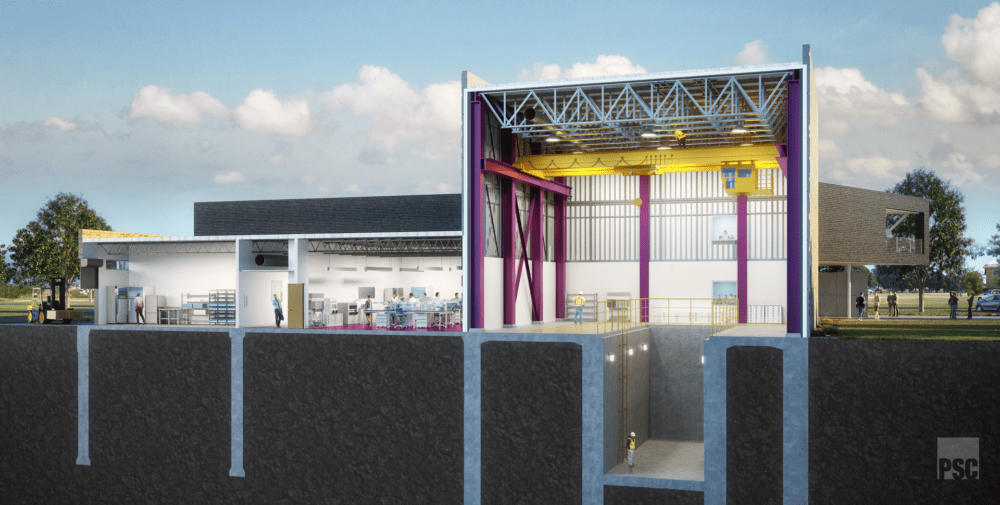
Aalo Atomics. Aalo Atomics is developing a factory-fabricated 10-MWe thermal neutron spectrum, sodium-cooled microreactor inspired by Idaho National Laboratory’s (INL) MARVEL project, using uranium zirconium hydride fuel for inherent safety. While the company was founded only two years ago, it has made quick progress. It signed a MOU in September 2024 with Idaho Falls Power to deploy seven reactors totaling 75 MW by 2030. In December 2024, the DOE identified a piece of land at INL as a potential site for a new experimental Aalo-X reactor facility. The company is now pursuing DOE authorization to build the facility, expecting to complete the process in less than two years, potentially kicking off construction in 2026, with operations starting in 2027.
Aalo, meanwhile, is pursuing investment funding to accelerate its vision of mass manufacturing nuclear reactors. It plans to establish a manufacturing facility in Austin, Texas. “We are hosting a grand unveiling of our finished factory prototype line and the prototype reactor for our first full-scale version in two months,” said Matt Loszak, Aalo Atomics co-founder and CEO, Tuesday.

Positioning Texas for Nuclear Leadership
“The Energy Proving Ground” project at the RELLIS project aligns broadly with key priorities outlined in findings released in the 2024–released findings Texas Advanced Nuclear Reactor Working Group (TANRWG) report. Established in August 2023 at the direction of Gov. Greg Abbott, the TANRWG’s recommendations suggest nuclear could offer the state a lucrative opportunity for energy security, grid reliability, and economic development, and cement the state’s global energy leadership in the face of rapidly growing power demands and the need for clean, reliable energy sources.
The state offers optimal conditions, it suggests. ERCOT’s “streamlined interconnection model, projected demand growth, and independent and deregulated market structure, coupled with Texas’ friendly regulatory environment, makes Texas an attractive investment for capital,” the report says. In addition, “Texas has leading supply chain and manufacturing capacity due in large part to local heavy industry operations from oil and gas. Pivoting existing capacity and scaling up local, specialized facilities will drive down costs, making Texas the preferred supplier for national and global [advanced reactor] projects.”
The state is already home to two nuclear plants: two units at Comanche Peak Nuclear Power Plant and two units at the South Texas Project, which have a combined capacity of 5 GW. The report notes that Central Texas, where RELLIS is located, and the Dallas-Fort Worth Metroplex to the north are home to large and expanding data center clusters, making them strategic locations for advanced nuclear reactors that could supply firm, local power. But it also points to coastal sites, including the Port of Corpus Christi, Galveston, Beaumont, and the Houston Ship Channel, as top contenders owing to their energy-intensive industries like liquefied natural gas, petrochemicals, and military logistics. The Permian Basin also presents a strong case to support oil and gas operations while also addressing transmission constraints and water desalination needs.
So far, several advanced nuclear reactor projects are making headway in the state. A much-watched project is Dow Chemical and X-Energy’s development of an XE-100 high-temperature gas reactor plant at Dow’s Seadrift petrochemical plant near the Gulf Coast to supply electricity and process steam, targeting construction by 2026. That project is a crucial part of the part of the DOE’s Advanced Reactor Demonstration Program (ARDP).
In Abilene, Central Texas, Natura Resources and ACU are advancing the MSR-1 molten salt research reactor. Within the Permian Basin in West Texas, two projects—one spearheaded by Shepherd Power and the other by Diamondback Energy with Oklo—are exploring microreactors to decarbonize oil and gas operations. Diamondback notably is eyeing 50 MW of nuclear capacity. Finally, in San Antonio, Joint Base San Antonio, CPS Energy, and the Air Force are assessing nuclear options to meet military energy resilience mandates.
—Sonal Patel is a POWER senior editor (@sonalcpatel, @POWERmagazine).
Correction (Feb. 5): Corrects a previous version of this article to clarify Hermes 1 is a 35-MWth iterative non-power demonstration molten salt nuclear reactor, not a non-nuclear demonstration.



